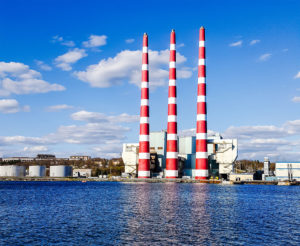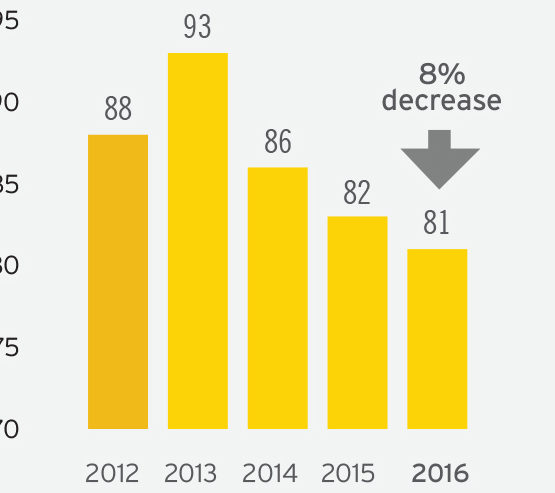Improving Air Quality

We carefully monitor ambient air emissions from our thermal generating stations, including mercury (Hg), nitrogen oxide (NOx), sulfur dioxide (SO2), and particulate matter (PM). Air emissions are measured, verified and reported under our Environmental Management System.
Changes that we’ve made to the way we generate thermal energy have led to emission reductions in recent years. In the period from 2012 to 2016, this has resulted in a 44 per cent drop in mercury emissions from our coal-fired generation at Tampa Electric and Nova Scotia Power. We also achieved an 8 per cent decrease in SO2 and a 2 per cent decrease in NOx over the same period from our thermal generation across Emera. As we continue to invest in cleaner sources of energy, we expect to see further reductions in air emissions from our energy generation in the future.
Controlling Emissions

Over a decade ago we began adding pollution control/abatement technology at our thermal generation stations in Nova Scotia and Florida. This has reduced emissions and improved air quality, meeting our regulatory requirements.
In Nova Scotia we have:
- “Low-NOx” combustion systems which control the emissions of nitrogen oxides at all of our generating units, except for Tufts Cove Units 1, 4 and 5, and Trenton Generating Station Unit 5. Tufts Cove Units 4 and 5 have a water-injection system to control emissions of NOx.
- Electrostatic precipitators at our units to control emissions of particulate matter. Baghouses are operated at Trenton Generating Station Unit 5 and Point Aconi Generating Station to filter out particulate matter.
- Activated carbon capture systems for mercury control at all of our coal-fired generating units, with the exception of Point Aconi Generating Station. Point Aconi is a circulating fluidized bed (CFB) unit, which is an inherently lower emitter due to the injection of limestone into the process.
At Tampa Electric’s Big Bend generation plant we have:
- Reduced sulfur dioxide and particulate emissions by improving existing control technologies on all four coal-fired units.
- Installed selective catalytic reduction technology to reduce nitrogen oxide emissions.
- Optimized flue gas desulfurization (scrubbers) and electrostatic precipitators to further reduce sulfur dioxide and particulate matter on all four coal-fired units.
Nova Scotia Power and Tampa Electric monitor the ambient air quality near coal-fired generating stations using networks of equipment located in nearby communities. These tools operate all day, year round, to make certain operations aren’t affecting local air quality or causing air-quality limits to be exceeded. Particulate matter (PM) emissions are tested when completing stack tests at regular intervals, and these levels are reported to regulators as required.
Notes: Mercury (Hg) emissions as measured at coal-fired generation stations at NS Power and Tampa Electric only, as mercury emissions do not apply to the other Emera companies. Includes 12 months of TECO data in 2016 and historical emissions to 2012.
Notes: Sulfur Dioxide (SO2) emissions as measured at thermal generation stations at NS Power, Tampa Electric, Emera Energy and Emera Caribbean. Includes 12 months of TECO data in 2016 and historical emissions to 2012.
Notes: NOx emissions as measured at thermal generation stations at NS Power, Tampa Electric, Emera Energy and Emera Caribbean. Includes 12 months of TECO data in 2016 and historical emissions to 2012.



